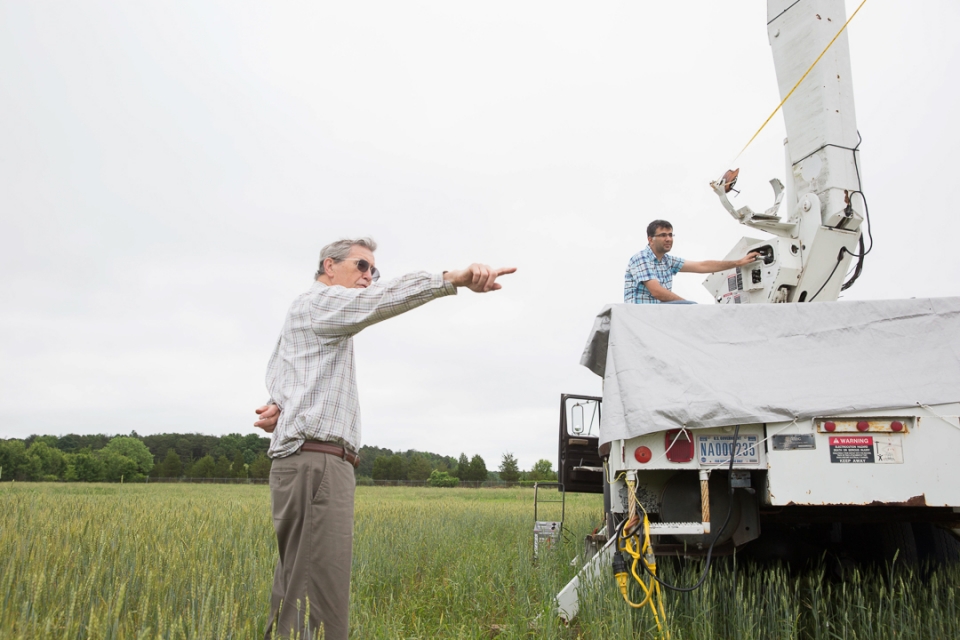By Lujain Al-Khawi
As a boy, for three months out of the year, Roger Lang and his family lived on a farm in upstate New York where his father processed cabbage in his nearby factory.
Dr. Lang’s interaction with farmers later inspired him to work on agricultural projects.
In 1990, Dr. Lang, along with NASA Goddard and the Department of Agriculture, worked on radar to detect moisture levels under vegetation in farm soils. Remote sensing technology was used to do this.
ComRAD or Combined Radar/Radiometer was developed in 2007. There are two major components to ComRAD: radar and a radiometer. While the radiometer measures the intensity of microwave radiation emitted from the soil and, therefore, the soil moisture levels, the radar measures vegetation attenuation. ComRAD’s instruments were mounted on a 19 meter hydraulic boom truck.
Finding the amount of water in the soil is important because moisture levels affect vegetation yields, plant health and growth.
This knowledge can also be helpful for predicting periods of drought or flooding so that farmers can take the necessary measures to protect their crops.
Dr. Lang and his team also created a microwave remote sensing model suitable for detecting vegetation attenuation and soil moisture.
A major component of the ComRad instrument is the large Cassegrain antenna used for reception and transmission. Having the radar and radiometer utilize the same antenna, with the same 12 degree field of view, greatly simplifies the development of active/passive microwave retrieval algorithms and acts as a simulator for a proposed satellite.
In a 2012 summer experiment this “system on a truck”, as Dr. Lang calls it, rose 60 feet high over the surrounding area above the corn and soybean fields located near NASA Goddard; the remote sensing system achieved its goals of sensing soil moisture with 5 to 10% accuracy.
What makes the ComRad so special is that it is truly the first of its kind. It is the only truck system with an L-Band radar and radiometer. The successful initiation of this project has set a precedent for other soil moisture remote sensing technology to arise in the future.
In 2015 NASA launched the Soil Moisture Active Passive (SMAP) satellite to measure the amount of water in the top 5 centimeters of soil on the earth’s land surface. ComRAD’s estimates of soil moisture over the growing season can now be compared with data from the SMAP satellite. Lang and his students are using the data that ComRAD generated to help understand the SMAP estimates of soil moisture levels.


